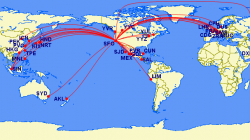“This job is 98% boredom and 2% sheer terror.”
-Eugene Foren, Chief Dispatcher at Bangor Airport.
Check out the images below. Can you notice anything in common about them?
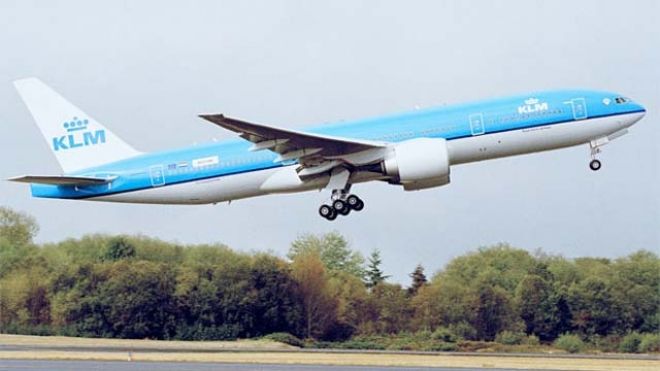
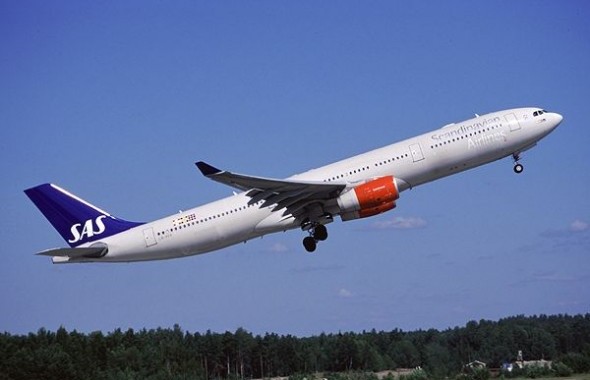
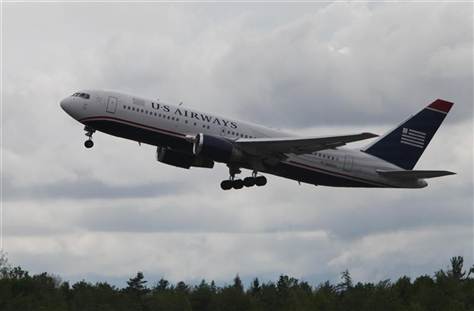
Off the top of my head, I don’t believe any single airport handles scheduled services from these three airlines on those three particular widebody planes. However, there has been an airport that has received all three of those planes sporadically – one that plays a very important role in the landscape of transatlantic air transport: Bangor International Airport (BGR) in Maine.
The photographs above feature three aircraft that have been diverted to Bangor, a city with a population size numbering less than 35,000 inhabitants. Bangor is the first major American airport that airliners will encounter when crossing the Atlantic Ocean inbound from Europe, as well as the last major airport before making the journey in the opposite direction.
Therefore, it is highly likely that the average person who has flown on a transatlantic flight between the US and Europe has flown over Bangor, Maine. Of course, this isn’t just a cool factoid of information about flight paths; rather, BGR plays an exceptionally critical role for airliners in cases when unscheduled stops or diversions inevitably arise. In particular, Bangor’s availability helps airliners manage “crisis situations” such as security threats, refueling, weather, medical emergencies, or aircraft maintenance.
Even though some of the major US airports are not located too far away from BGR (the largest and seemingly most obvious choice is Boston Logan airport (BOS) in Massachusetts), Bangor is strategically designed to handle emergencies without adding additional complexities. For example, because of the small population size of the city, local traffic only supports approximately 20 daily scheduled flights; therefore, its airspace is relatively uncluttered most of the time to handle any diversion without delays.
Additionally, Bangor’s runway is more than 2 miles long at 11,440 feet (3.2 km) which is actually longer than Boston’s. The airport is readily equipped to handle all-types of diversions; in situations where medical emergencies or security threats are at large, a speedy team of firefighters, ambulances, police officers and federal agents are quick to assemble to meet the plane. Two hospitals are conveniently located nearby as well.
From a passenger experience standpoint, a diversion is never glamorous, especially one that involves formalities such as clearing Customs and Immigration. By law, passengers are required to clear Customs and Border Protection, and luggage is off-loaded. The airport does have an “international” terminal set-up to accomodate up to 700 passengers in such situations, with seats, a gift shop and a LEGOs table for kids.
However, Bangor is usually equipped with provisioning. By de-facto, passengers receive food and donated cell phones to make calls during a diversion. In addition, a local tour bus company has an agreement with the airport to bus passengers in cases of short notice.
Of course, no good deed goes unrewarded: the airport does get to collect landing fees, fuel fees and ground-handling fees during each diversion, amounting anywhere between $2,000 and $3,000 per flight as a nice small profit for BGR.
Although the extra revenue is nice for the airport, it obviously comes with high standards and requirements from the local workers. The airport must keep a “dispatch operations center” staffed around the clock in case of unexpected diversions. In addition, the airport has to notify multiple parties – including the Transportation Security Administration (TSA), Federal Bureau of Investigation (FBI), Customs and local hospitals, hotels and restaurants of the contingency.
Furthermore, the situation becomes a bit harrier during inclement weather, when necessary precautions such as de-icing have to take place. As such, airport workers are trained and expected to pitch in with other duties in such situations beyond the scope of their regular tasks.
Overall, Bangor’s readiness to handle diversions (counting now at 647 since 2005), according to Scott McCartney, author of the blog, The Middle Seat, a travel-oriented beat of The Wall Street Journal, is “a model for other airports still struggling to figure out their responsibility for diverted flights.” In his article covering the subject, McCartney mentions how the U.S. Department of Transportation is requiring airports and airlines to submit contingency plans for tarmac delays, given that several previous incidences have resulted in nightmares for stranded passengers due to lack of coordination between these parties and the FAA.
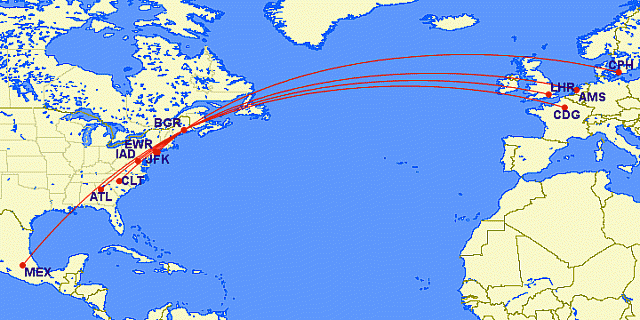 The Great Circle Mapper shows the ideal locality of Bangor on the US-Europe corridor. Featured here are several examples of diversions between two points on both continents that have made emergency stops in Bangor, including one on a London-bound British Airways flight that actually originated in Mexico City. The others include a KLM flight between Washington D.C. and Amsterdam, a Delta flight between Atlanta and Paris, a British Airways flight between New York and London, and two more recent examples: an SAS flight between Newark and Copenhagen and a US Airways flight between Charlotte and Paris de Gaulle.
The Great Circle Mapper shows the ideal locality of Bangor on the US-Europe corridor. Featured here are several examples of diversions between two points on both continents that have made emergency stops in Bangor, including one on a London-bound British Airways flight that actually originated in Mexico City. The others include a KLM flight between Washington D.C. and Amsterdam, a Delta flight between Atlanta and Paris, a British Airways flight between New York and London, and two more recent examples: an SAS flight between Newark and Copenhagen and a US Airways flight between Charlotte and Paris de Gaulle.
Featured Article:
“In Case of Emergency, Fly to One Tiny Airport in Maine.” Written by Scott McCartney, author of The Middle Seat blog on The Wall Street Journal.
Special thank-you to my friend and colleague, Andrew Chapello, for referring this article as a featured post. Click here to check out his website, Chapello’s Thoughts.

